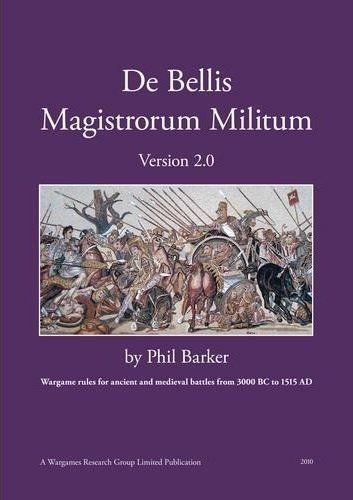De Bellis Magistrorum Militum: Wargame Rules for Ancient and Medieval Battle from 3000 BC to 1525 AD (2007) Board Game
De Bellis Magistrorum Militum, also known as DBMM, is a set of wargaming rules for ancient and medieval battles. It was first published in 1990 by author Phil Barker and has since gained a devoted following among historical wargaming enthusiasts. The game covers a wide range of periods, from 3000 BC to 1525 AD, allowing players to recreate historical battles with miniature figures on tabletops.
Game Components of De Bellis Magistrorum Militum
How To Setup De Bellis Magistrorum Militum
To set up DBMM, players first select their armies using the published army lists, ensuring they are roughly equal in points. The battlefield is then set up with terrain pieces. Each army is organized into commands, with each command having its own PIPs determined by dice rolls. The frontage width of troop stands (elements) is standardized, but the depth and number of models vary by troop type.
Gameplay Mechanics and Game Objective
Player Experience
DBMM offers a deeply immersive and historically accurate wargaming experience. The game requires a significant amount of preparation and study, as the rules and army lists are detailed and complex. Players must balance strategic planning with tactical execution, making it appealing to those who enjoy both the historical aspect and the challenge of complex gameplay.
Pros
Cons
Personal Thoughts on De Bellis Magistrorum Militum
DBMM is designed for the discerning wargamer who values historical accuracy and complexity. It is ideal for those with a strong interest in ancient and medieval history and the tactical nuances of historical battles. While it may not be the best fit for casual players due to its complexity, it offers a rich and rewarding experience for those willing to invest the time and effort to master its intricate rules.
We are supported by our audience. When you purchase through links on our site, we may earn an affiliate commission, at no extra cost for you. Learn more.

